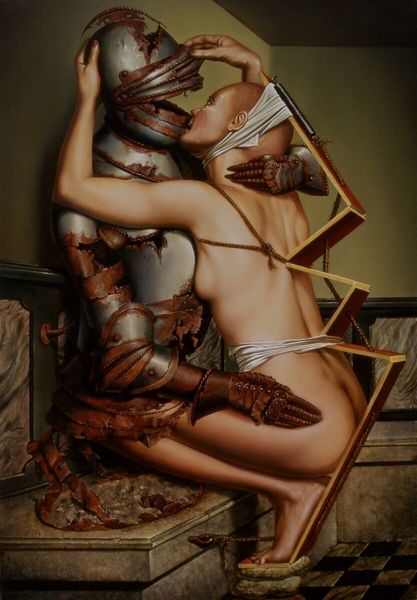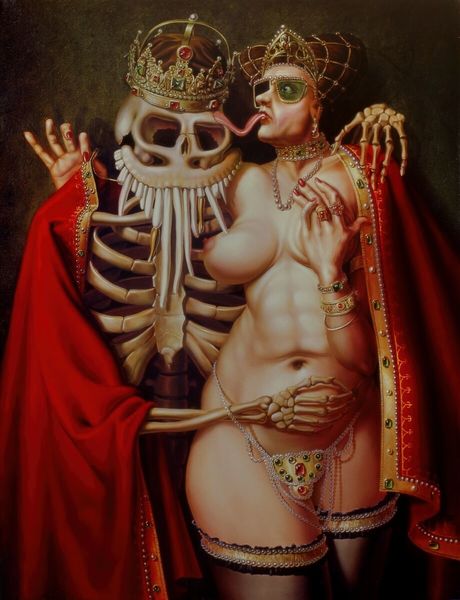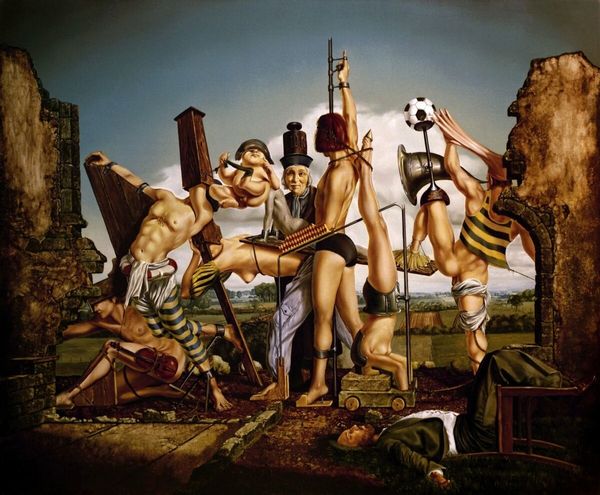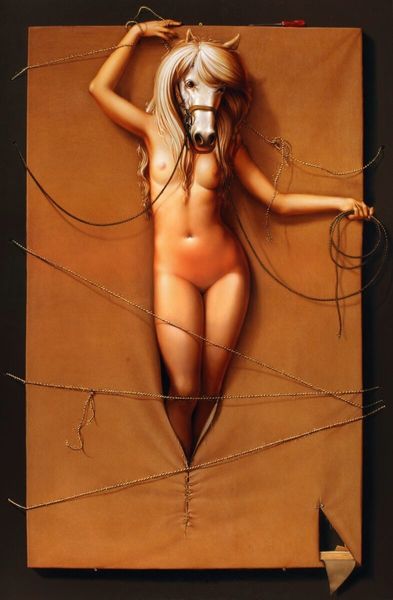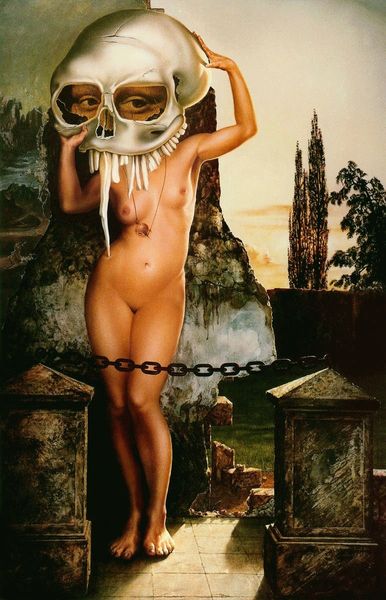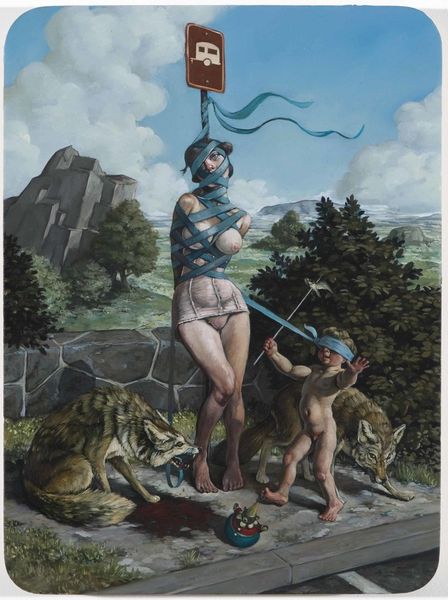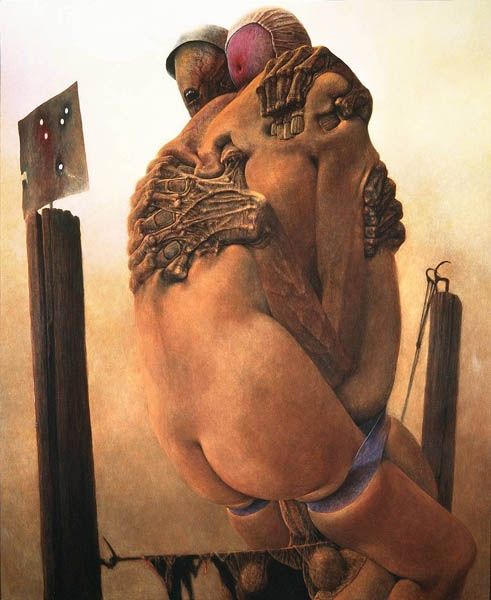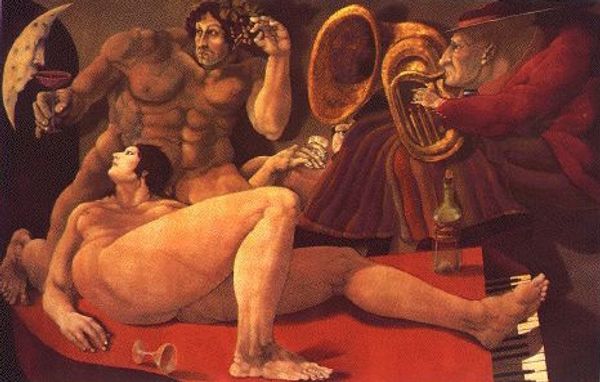
Copyright: Modern Artists: Artvee
Editor: Here we have Siegfried Zademack’s 1982 oil painting, *Vier Dialektiker, posierend*. It's… certainly striking! The figures are so intensely rendered, almost grotesque. What formal elements jump out at you? Curator: Immediately, the manipulation of form and colour serves as a crucial entry point. Note the contrasting textures: the smoothness of skin against the rigid helmets, the soft draping of the cloth. Observe also the tonality – the near monochrome palette is punctuated by that assertive red element that physically connects and dominates the composition. How does the stark composition create meaning, would you say? Editor: Well, the lines created by the tongues are really disturbing, a physical manifestation of connection or perhaps constraint, and the garish colour definitely commands attention. They're bound by this bizarre… umbilical cord? The spatial composition confines the figures, making me think about control. Does this exaggerated presentation point to any meaning in particular, would you guess? Curator: Precisely. Exaggeration is the method of emphasis here. These shapes are simplified and then contorted. The figures push out into our own space. If we deconstruct it, this arrangement emphasizes power dynamics and distorted reality. The interplay of these constructed forms communicates meaning as forcefully as any direct symbolism could. Editor: I hadn’t thought of it that way before! Seeing the formal elements as carriers of meaning, like a language in themselves. It really opens up a whole new level of understanding. Curator: Yes, focusing on the internal mechanics reveals how the visual syntax affects the work. An approach to an interpretation can reveal much.
Comments
No comments
Be the first to comment and join the conversation on the ultimate creative platform.

